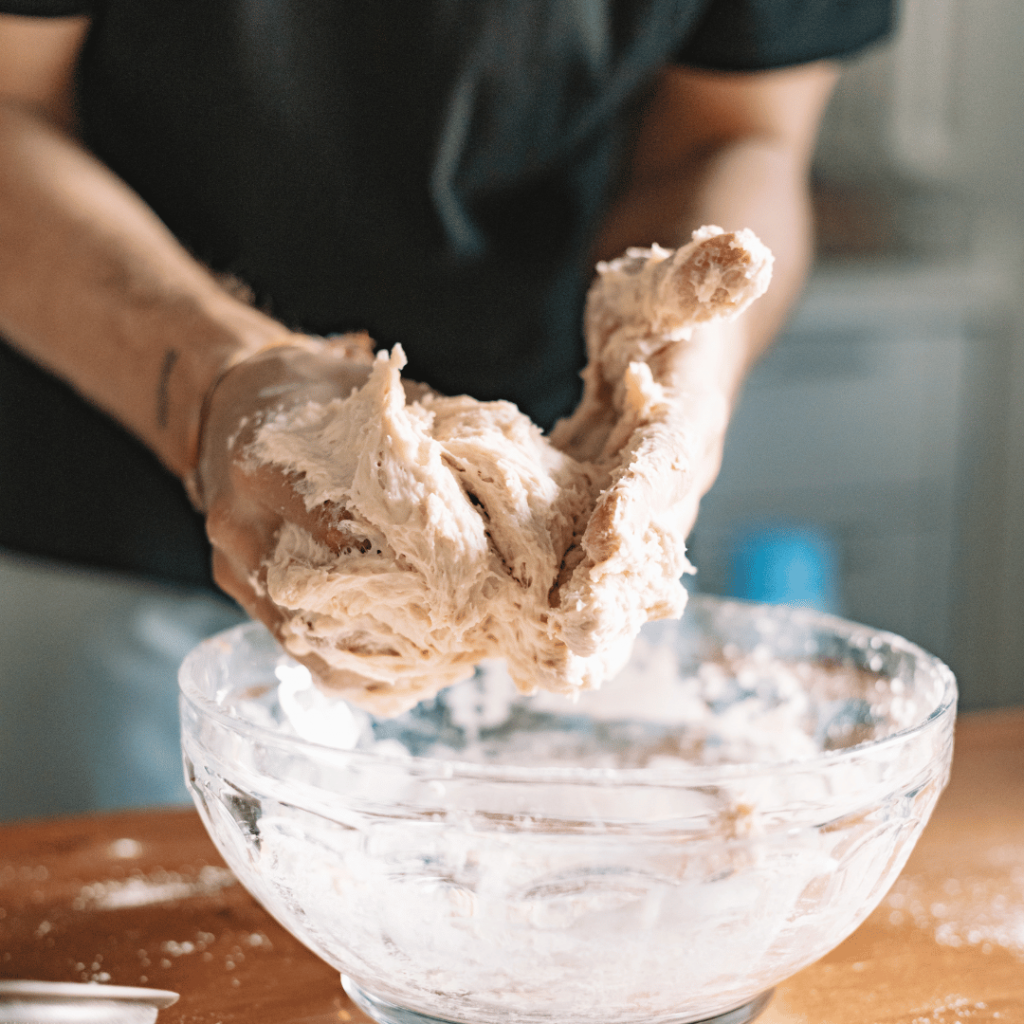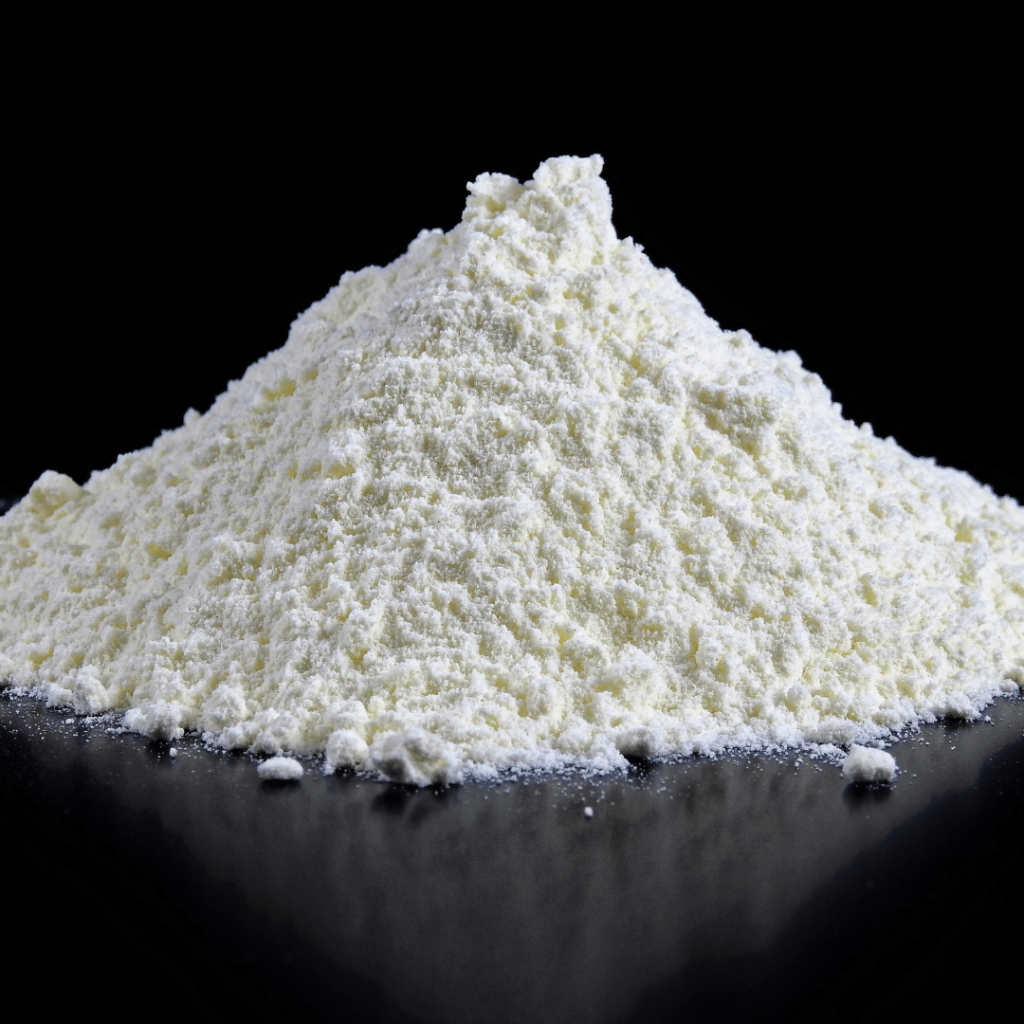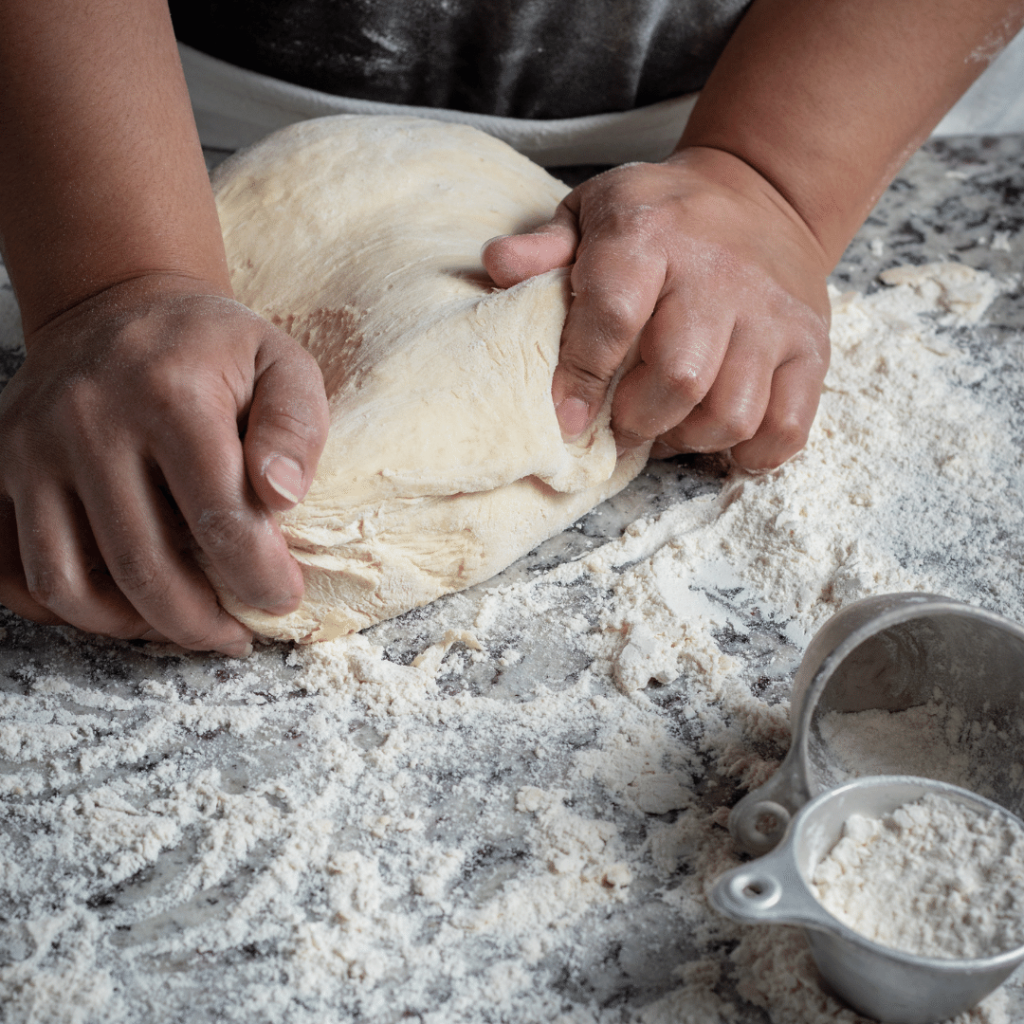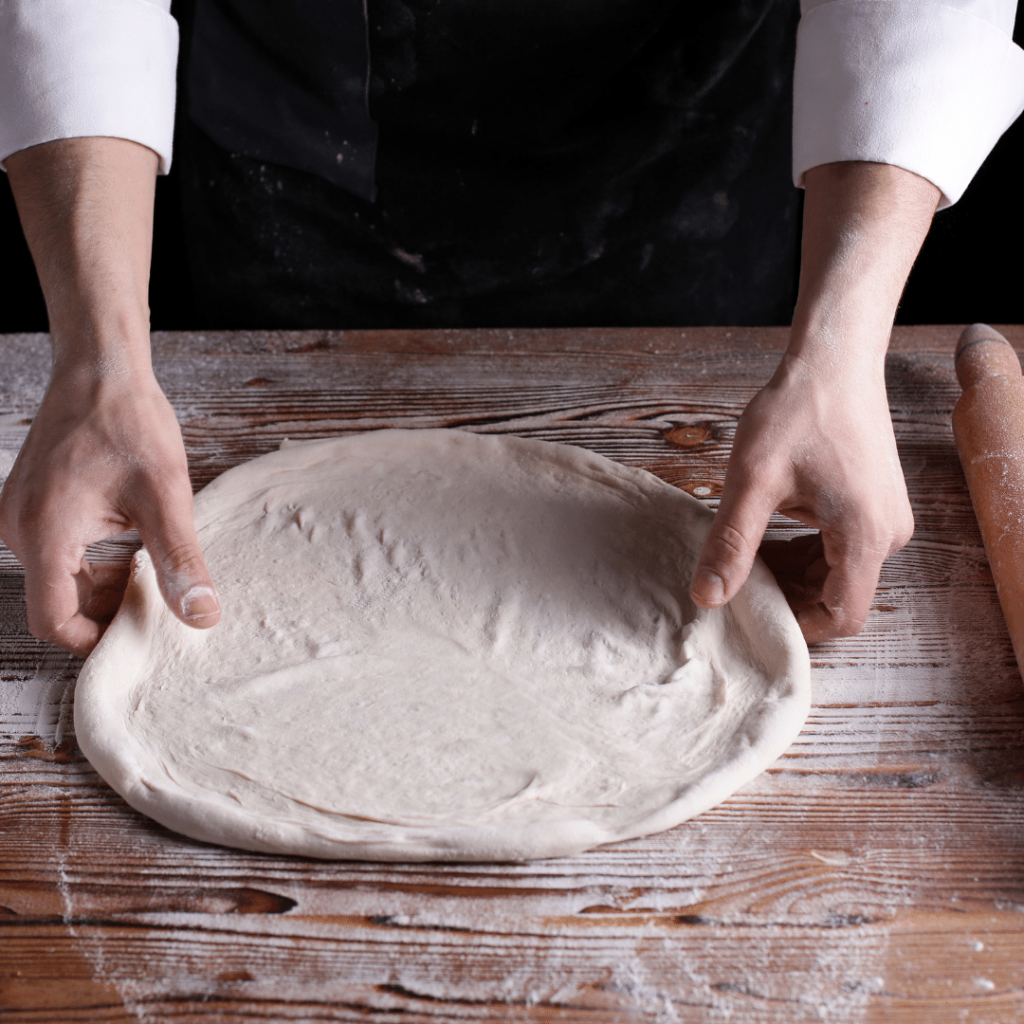Ever wondered, “why is my pizza dough too sticky?” You’re kneading away, dreaming of that perfect crust, only to find your dough stubbornly sticking to your hands, the counter, and seemingly everything else. Don’t worry, fellow pizza enthusiasts; you’re not alone in this sticky situation.
In this article, we’ll dive into the common causes of overly sticky pizza dough and provide practical solutions to get your dough back on track for that ideal, mouth-watering pizza.
When tackling the question of “why is my pizza dough too sticky,” it’s essential to understand that making pizza dough is both an art and a science. The perfect dough texture is crucial for achieving that crispy yet tender crust we all crave. But sometimes, the dough has other plans, turning into a sticky mess that’s hard to handle.
The primary reason for this stickiness is often the dough’s hydration level, but several factors can contribute, including the type of flour used, the kneading technique, and even the ambient humidity.
In simple terms, your pizza dough is too sticky mainly because of an imbalance in the flour-to-water ratio or because of the specific flour type’s water absorption characteristics. Adjusting these elements can significantly reduce stickiness, making your dough more manageable.

This article will explore the various reasons behind the sticky dilemma of pizza dough and offer targeted strategies to fix it. Here’s what we’ll cover:
- Understanding Dough Hydration: Learn about the role of water in your dough and how to adjust it for the perfect texture.
- Choosing the Right Flour: Not all flours are created equal. We’ll discuss how the protein content affects dough stickiness and which flours are best for pizza.
- Kneading Techniques: Discover how to knead your dough to the right consistency without overdoing it.
- Managing the Rising Process: Tips on how to let your dough rise correctly to avoid stickiness.
- Yeast Management Best Practices: How to handle yeast to prevent a sticky dough outcome.
- Stretching and Topping the Pizza: Techniques to shape your pizza without the dough sticking to everything.
- Preventing Sticking to Pizza Stone and Peel: Practical advice for using these tools without the dough sticking.
Why Is My Pizza Dough Sticky?
High Hydration
At the heart of many sticky pizza dough dilemmas is an essential yet tricky ingredient: water.
While water is crucial for giving dough its necessary hydration, elasticity, and aiding in gluten development, an excess of it can lead to a dough that’s more akin to a sticky swamp than a smooth, workable base for your pizza creations.
Finding the right hydration level is more of an art form, influenced by variables such as the flour type, how you knead the dough, and even the temperature at which you plan to bake.
While there’s no one-size-fits-all hydration percentage, beginners might find it easier to start with a hydration level around 60%. This level offers a good balance, making the dough easier to handle while still retaining the moisture needed for a delicious crust. More experienced bakers often venture into higher hydration levels, seeking the airy cornicione and blistered crusts that come with wetter doughs, but these can be challenging to manage without practice.
To sidestep the stickiness trap, precision in measuring your ingredients is key. Swapping out the measuring cups for a kitchen scale can dramatically increase your accuracy, ensuring you’re adding just the right amount of water to your mix.
To help illustrate the concept of hydration levels and how to calculate them, let’s look at a basic example using baker’s percentages. This system expresses ingredients as a percentage of the flour’s weight, which is always set at 100%.
If you’re making a dough with 1000 grams of flour and you want a 60% hydration level, you’d calculate the water amount as follows:
- Flour: 100% (1000 grams)
- Water: 60% of the flour’s weight (1000g x 0.60 = 600 grams)
This means for 1000 grams of flour, you would use 600 grams of water to achieve a 60% hydration level.
By adjusting these percentages, you can experiment with different hydration levels to find the one that best suits your preferences and skill level, ensuring your pizza dough is neither too dry nor too sticky.
Type of Flour
A key factor contributing to sticky pizza dough is the selection of flour. Not all flours are created equal, and their varying protein levels play a significant role in how much water they absorb and the strength of the gluten network they can form. For pizza dough that’s just right—not too sticky, not too dry—you’ll want to opt for a flour with a moderate to high protein content.
Ideal Flour Types for Pizza Dough
- Bread Flour: Known for its high protein level, bread flour is a go-to for many pizza recipes. It absorbs water efficiently and forms a strong gluten network, making it less likely to result in a sticky dough.
- All-Purpose Flour: With a moderate protein level, all-purpose flour is a versatile option that works well for a variety of pizza dough types, balancing hydration and elasticity.
- Tipo 00 Flour: For those aspiring to craft authentic Neapolitan pizza, tipo 00 flour is the traditional choice. Its fine milling and protein content are tailored for high-temperature baking, yielding a tender crust with a delightful chew.
Flours to Avoid
- Cake Flour and Pastry Flour: These flours have lower protein levels and are designed for tender, soft baked goods. In pizza dough, they lead to excessive stickiness due to their higher water absorption rate.
- Self-Rising Flour: This flour includes baking powder and salt, making it unsuitable for pizza dough due to its chemical leavening agents and low protein content.
The Importance of Flour Quality
Beyond type, the freshness and quality of your flour can significantly impact your dough. Old or substandard flour might not only absorb water inconsistently but also compromise gluten development, leading to an undesirably sticky texture.
By selecting the right type of flour and ensuring it’s fresh and high quality, you can master the hydration balance in your pizza dough, achieving the perfect foundation for your toppings and a crust that bakes up crispy on the outside and tender on the inside.

Water Absorption
Water absorption in flour is a critical factor that dictates how much water flour can take in and hold without the dough becoming overly sticky. This characteristic is crucial for achieving the ideal texture in pizza dough and is influenced by several factors, including the flour’s protein content, starch level, and the fineness of its milling.
Key Factors Affecting Water Absorption
- Protein Level: Flour with a higher protein content tends to have greater water absorption capabilities. This is because protein molecules, particularly glutenin and gliadin (which together form gluten), have the ability to bind with water, creating a dough that’s elastic and extensible rather than sticky. Strong flours, like bread flour, are rich in protein and thus excellent for high-hydration doughs, allowing for a stretchy dough that can trap gases and expand without tearing.
- Starch Level: The starch content in flour also plays a significant role in water absorption. Lower starch levels mean higher water absorption since starch competes with protein for water. Starch molecules absorb water and swell, which is essential for the dough’s structure, but excessive starch can make the dough too tight and reduce its ability to absorb water efficiently.
- Milling Process: The fineness with which flour is milled impacts its water absorption. Finely milled flours, like the Italian tipo 00 flour, have a reduced surface area for water interaction compared to coarser flours. Tipo 00 flour, renowned for making authentic Neapolitan pizza, is finely ground and has a protein content tailored for pizzas baked at high temperatures. It absorbs water differently than more coarsely milled flours, resulting in a dough that’s manageable and can produce a tender crust with a light, airy texture.
Flour Types and Pizza Dough Hydration
- Italian Tipo 00 Flour: Ideal for classic Neapolitan pizzas, tipo 00 flour has a balanced protein content that suits the high heat of wood-fired ovens. Its fine milling allows for a silky-smooth dough that’s easy to stretch and shape, perfect for thin-crust pizzas requiring a delicate touch.
- Strong Flour (Bread Flour): For pizza doughs with higher hydration, strong flour is preferred due to its high protein level. This flour absorbs more water, making it possible to achieve a dough that’s both moist and capable of developing a good gluten structure, essential for airy, chewy crusts typical of artisanal pizzas.
Understanding the nuances of water absorption in different types of flour can significantly enhance your pizza-making experience.
By choosing the right flour—be it the finely milled Italian tipo 00 for a traditional Neapolitan base or a strong bread flour for a robust, high-hydration dough—you can manipulate the dough’s texture and hydration to suit your pizza style perfectly.
Humidity
Humidity, or the level of water vapor in the air, plays a crucial role in how your pizza dough turns out. In high humidity conditions, flour tends to absorb more moisture from the air, potentially leading to stickier dough. Conversely, in dry climates, the flour won’t pick up as much ambient moisture, which can result in a drier dough.
To tackle the challenges posed by humidity, it’s wise to adjust your dough’s water content. If the air feels moist, consider reducing the water in your dough mix by 1% to 2% for every 10% increase in humidity. On drier days, do the opposite by adding a bit more water to compensate for the lack of moisture in the air. This simple adjustment can help maintain the ideal dough consistency, regardless of the weather.
Gluten
When flour meets water and the kneading process begins, gluten—a network of protein strands—starts to form. This gluten network is fundamental, providing the dough with its strength, elasticity, and structure, crucial for trapping gas bubbles and facilitating the rise that leads to a light, airy crust.
A lack of gluten development is another common reason for sticky dough.
Managing Gluten for the Perfect Dough
- Optimal Kneading: Achieving the right amount of gluten development requires careful kneading. Over-kneading can lead to an overdeveloped gluten network, making the dough tough, dense, and ironically, sticky. Aim to knead the dough until it forms a smooth and elastic ball. This texture indicates that the gluten has been developed sufficiently but not excessively. A general guideline is to knead for 10 to 15 minutes by hand or 5 to 10 minutes if using a machine.
- Resting the Dough: Equally important is allowing the dough to rest. Rest periods let the gluten relax, making the dough more extensible and easier to shape without snapping back. This relaxation is crucial for preventing the dough from becoming overly tight and sticky. The specific resting time can vary depending on several factors, including the yeast content in your dough; more yeast may require shorter rest times due to faster fermentation.
In summary, while gluten development is essential for creating a structurally sound and airy pizza crust, managing the extent of this development through controlled kneading and adequate resting is key to avoiding sticky dough.

Improper Yeast Handling
Yeast, the tiny but mighty engine behind the magical rise of our pizza dough, is a living organism that demands respect. It feasts on the sugars within the flour, burping out carbon dioxide and alcohol, which give our dough that beautiful rise, delightful flavor, and the air pockets and bubbles that make the crust so special. But mishandle this microscopic powerhouse, and you might find yourself wrestling with dough that’s stickier and more unmanageable than a piece of gum on a hot sidewalk.
Here’s where things often go awry:
- Using too much yeast is like throwing a party and inviting too many guests. The dough becomes overly active, leading to a sticky mess.
- Old or expired yeast is akin to relying on a sleepy party guest to get things started. It just doesn’t work, leaving you with a flat, lifeless dough.
- The wrong type of yeast can confuse the situation, much like bringing a cat to a dog park. Each type has its specificities and using one in place of another without adjustments can lead to sticky outcomes.
- Exposing yeast to high temperatures or salt directly can be the equivalent of throwing it into a gladiator ring unarmed. High heat can kill yeast, while direct contact with salt can dehydrate and weaken it before it even has a chance to work.
To keep your yeast happy and your dough perfectly pliable, here’s what you need to do:
- Follow the yeast package instructions meticulously. Yeast manufacturers have done the heavy lifting in the lab to ensure their product works best under specific conditions.
- Store your yeast properly, in a cool, dry place or in the refrigerator once opened, to prolong its life and keep it active.
- Use the right amount and type of yeast for your recipe. This might require a bit of math if you’re substituting one type for another (e.g., active dry for instant), but getting it right makes all the difference.
- Proof the yeast if necessary, especially if using active dry yeast. This means dissolving it in a little warm water (not hot!) with a pinch of sugar to ensure it’s alive and ready to get to work. Instant yeast, on the other hand, can often be mixed directly into the flour without proofing.
By giving yeast the care and respect it deserves, you can avoid the pitfalls of sticky dough and ensure that your pizza crust rises to the occasion, both literally and figuratively.
How To Fix Sticky Dough
Tackling sticky pizza dough can feel daunting, but with a few adjustments to your technique and ingredients, you can transform that tacky mass into a smooth, manageable dough ready for the oven. Here’s a concise guide on how to remedy sticky pizza dough, incorporating strategies from hydration adjustment to kneading and resting techniques.
1. Less Water
The first step in addressing sticky dough is to evaluate your hydration level. If the dough feels excessively sticky at the outset, consider reducing the amount of water in your recipe. A slight adjustment can significantly affect the dough’s texture, making it easier to work with without compromising the crust’s quality.
2. Add Flour
If you’ve already mixed your dough and find it too sticky, gradually incorporate a little more flour during the kneading process. Sprinkle the flour sparingly to avoid making the dough too dry; just enough to reach a tacky yet not sticky consistency is ideal. Aim for a balance where the dough no longer sticks to your hands or the work surface.
3. Knead More or Try Stand Mixer
Sometimes, sticky dough needs more kneading to develop the gluten properly and absorb the moisture evenly. Continue kneading by hand, ensuring to fold the dough onto itself and press it down repeatedly. Alternatively, using a stand mixer with a dough hook attachment can help evenly distribute moisture and develop gluten without adding too much extra flour.
4. Shape Using Wet Hands to Prevent Sticking
When it comes time to shape your dough, wetting your hands slightly can prevent sticking without adding extra flour to the dough’s surface. This method is particularly useful for high-hydration doughs that are meant to be a bit sticky to achieve a light, airy crust.
5. Rise
Proper rising (or proofing) is essential not just for flavor and texture but also for managing stickiness. A well-risen dough will be easier to handle and less prone to sticking because the yeast has had time to produce gases, making the dough lighter and less dense.
6. Rest
Finally, don’t underestimate the power of resting your dough. After the initial knead and before shaping, allow your dough to rest so the gluten can relax. This makes the dough more extensible and less likely to snap back or stick to your hands and surface. A second rest after shaping but before baking can further reduce stickiness and improve the final texture of your crust.
By following these steps—adjusting water content, adding flour judiciously, kneading sufficiently, shaping with wet hands, allowing for proper rise, and resting the dough—you can effectively fix sticky pizza dough and ensure it’s a pleasure to work with, leading to delicious results every time.
Is Sticky Pizza Dough Good?
Sticky pizza dough might initially feel like a setback in the pizza-making process, often perceived as difficult to handle and shape. However, this perception overlooks the benefits that come with a higher hydration dough, which is typically what causes the stickiness. In reality, sticky pizza dough can lead to exceptionally good results when baked.
Why Sticky Dough Can Be Beneficial
- Airy and Light Crust: High hydration levels, which result in stickier dough, are key to achieving a light, airy crust. During the baking process, the water in the dough turns into steam, creating air pockets and giving the crust its desirable puffiness and chew.
- Enhanced Flavor: Sticky dough tends to ferment better, as the yeast has more moisture available to work with. This fermentation process not only helps the dough rise but also develops complex flavors that are characteristic of artisanal pizzas.
- Better Texture: A well-hydrated, sticky dough often results in a crust that’s crispy on the outside while remaining tender and chewy on the inside. This contrast in textures is a hallmark of a well-crafted pizza.
While sticky dough is advantageous for quality pizza crusts, managing it requires technique and practice. Using the right tools, such as a well-floured surface, a dough scraper, and sometimes wet hands for shaping, can mitigate the challenges of handling sticky dough.
Additionally, mastering the art of gentle shaping and transferring the dough to a pizza stone or peel with confidence ensures that the dough’s higher hydration translates into the desired baking outcomes.
How To Stretch Sticky Pizza Dough
The act of stretching the dough and artfully adding toppings is where the magic happens, transforming a simple ball of dough into a delicious work of art. However, to ensure that your canvas remains perfect and free from stickiness, there are specific techniques and considerations to keep in mind.
The foundation of every great pizza starts with how you stretch the dough. This crucial step sets the stage for everything that follows, determining the texture and evenness of your crust.
- Prepare Your Surface: Begin with a well-floured work surface and hands to prevent sticking. This acts like a barrier between the dough and the counter, allowing for smooth, uninterrupted stretching.
- Ditch the Rolling Pin: While it might seem like a helpful tool, a rolling pin can actually compress the dough, squeezing out the gas created by the yeast. This not only deflates your dough but can also lead to stickiness. Instead, opt for hand-stretching, which preserves the dough’s airiness and structure.
- Gentle and Circular Motions: Start from the center of the dough, gently pushing outwards with your fingertips in a circular motion. This method helps maintain an even thickness while allowing you to create a thicker edge for that classic crust. The key is to be gentle to avoid tearing the dough.

Sticky Pizza Dough – FAQs
Why is my pizza dough so sticky?
Pizza dough becomes sticky primarily due to excessive water content compared to the amount of flour. The hydration level, type of flour used, and insufficient kneading or overdevelopment of gluten can also contribute to stickiness.
How can I fix sticky pizza dough?
To fix sticky pizza dough, gradually add a little more flour and continue kneading until the dough reaches a smooth and elastic consistency. Be cautious not to add too much flour, which can make the dough dry and tough.
Does high humidity affect pizza dough?
Yes, high humidity can cause flour to absorb more moisture from the air, leading to stickier dough. Adjust the water content in your recipe based on the humidity levels, reducing water in high humidity and increasing it in dry conditions.
Can I use any type of flour for pizza dough?
While you can use different types of flour, bread flour or all-purpose flour are recommended for their moderate to high protein content, which is ideal for pizza dough. Avoid using cake flour or self-rising flour, as their low protein levels can result in a sticky dough.
How long should I knead pizza dough to avoid stickiness?
Knead pizza dough for about 10 to 15 minutes by hand or 5 to 10 minutes by machine. Proper kneading develops gluten to the right extent, preventing the dough from being too sticky.
What is the ideal hydration level for pizza dough?
The ideal hydration level for pizza dough typically ranges from 60% to 65% for a thin crust and 70% to 75% for a thicker crust. Adjust hydration based on your preference and the specific requirements of the pizza style you’re making.
Why should I let my pizza dough rest?
Resting allows the gluten strands in the dough to relax, making it less elastic and easier to shape. It also helps in achieving a better texture and flavor after baking.

